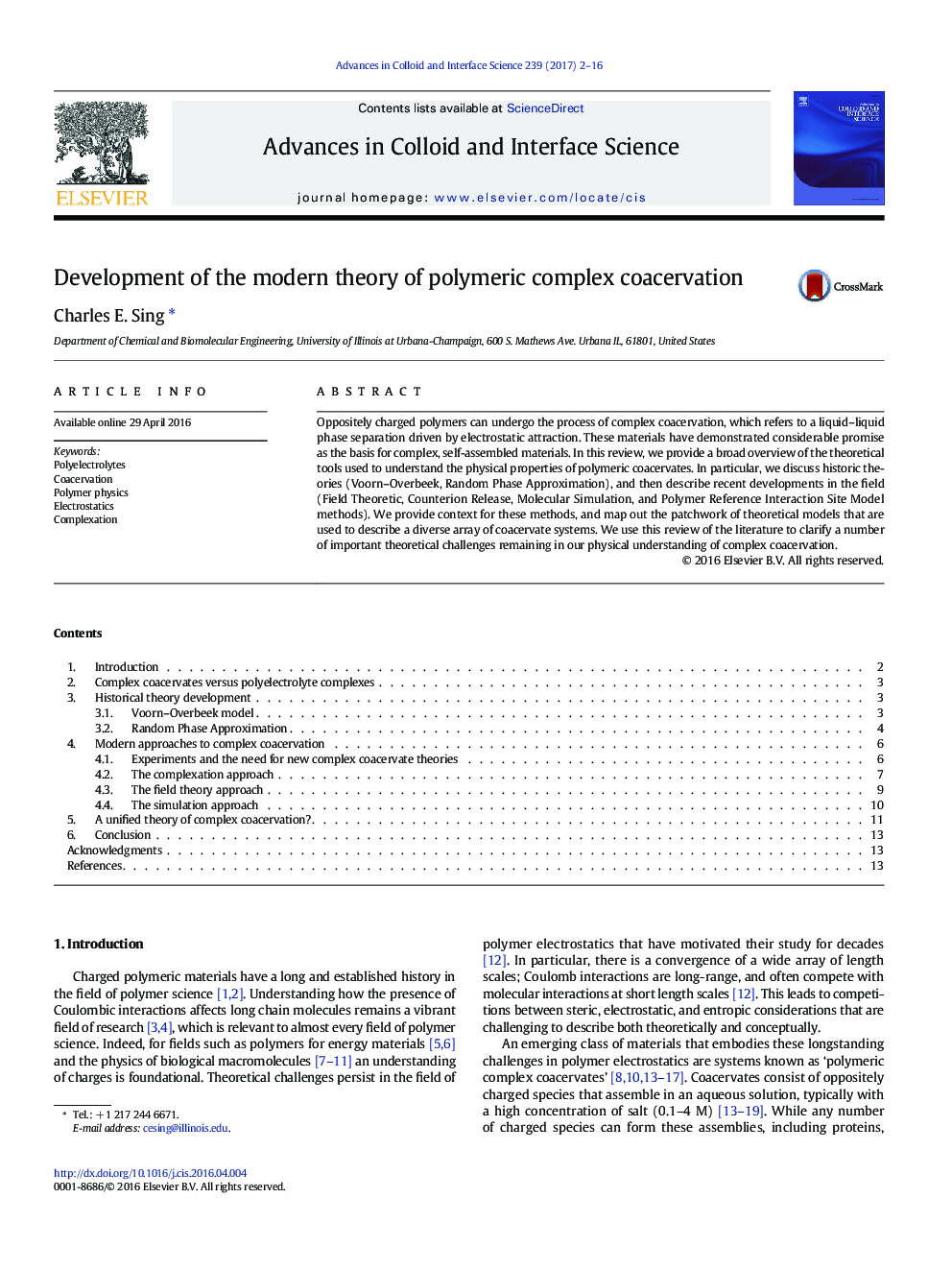| Article ID | Journal | Published Year | Pages | File Type |
|---|---|---|---|---|
| 4981500 | Advances in Colloid and Interface Science | 2017 | 15 Pages |
â¢Polymeric complex coacervates are an important class of electrostatically-driven polymer materials.â¢Historic theories are often invoked to describe polymer coacervates, however do not capture important physical behaviorsâ¢A broad palette of new theoretical methods capture many relevant physical effects in coacervates, albeit with limitationsâ¢New methods are needed to describe or predict all the physical effects in emerging coacervate-driven self-assembly
Oppositely charged polymers can undergo the process of complex coacervation, which refers to a liquid-liquid phase separation driven by electrostatic attraction. These materials have demonstrated considerable promise as the basis for complex, self-assembled materials. In this review, we provide a broad overview of the theoretical tools used to understand the physical properties of polymeric coacervates. In particular, we discuss historic theories (Voorn-Overbeek, Random Phase Approximation), and then describe recent developments in the field (Field Theoretic, Counterion Release, Molecular Simulation, and Polymer Reference Interaction Site Model methods). We provide context for these methods, and map out the patchwork of theoretical models that are used to describe a diverse array of coacervate systems. We use this review of the literature to clarify a number of important theoretical challenges remaining in our physical understanding of complex coacervation.
Graphical abstractDownload high-res image (351KB)Download full-size image
